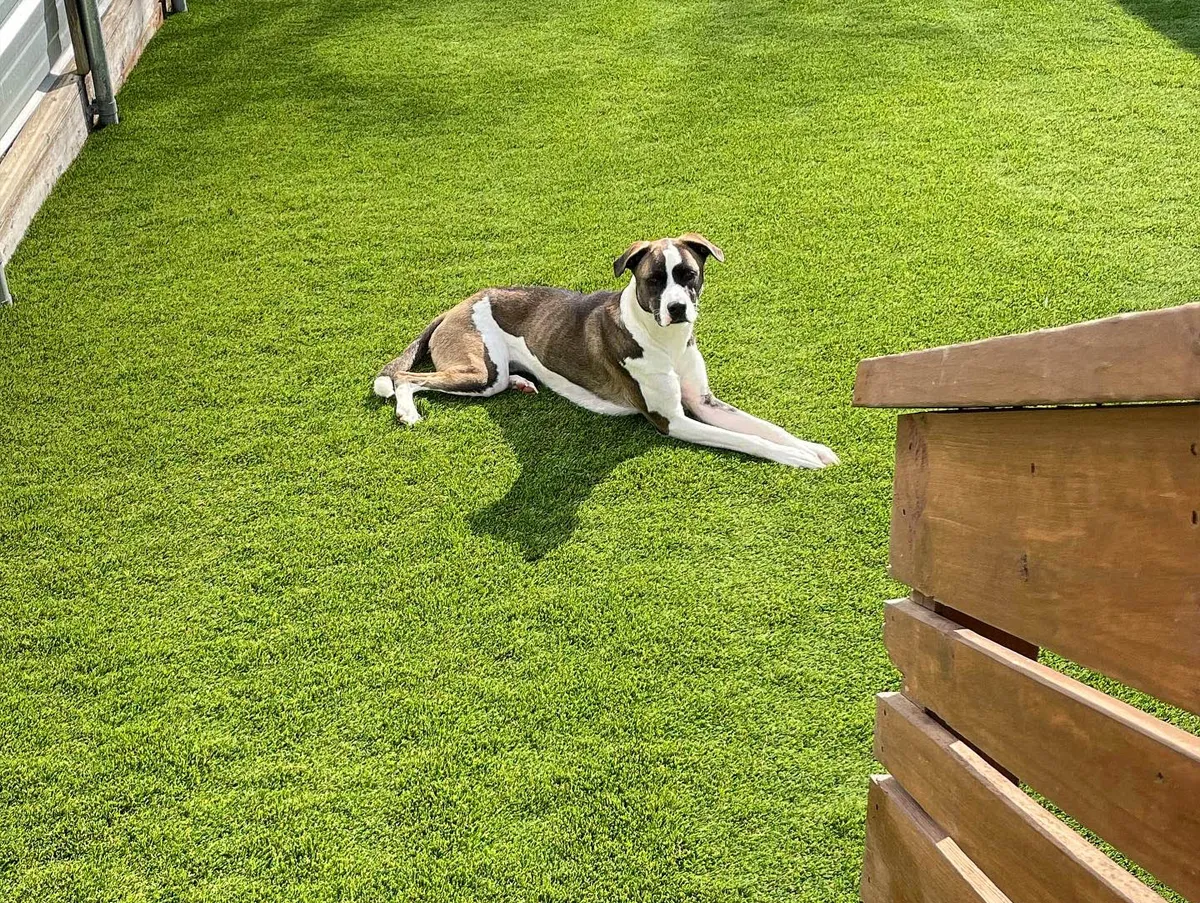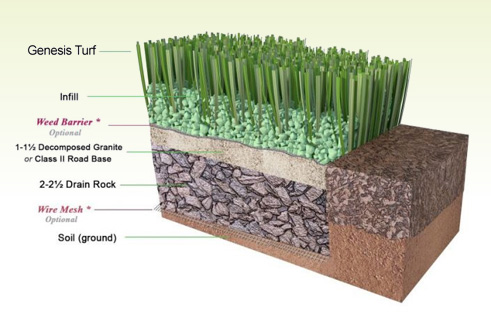See Why Homeowners Prefer Artificial Grass for Lasting Landscaping Practices
As home owners significantly focus on sustainability in landscape design, synthetic grass has actually emerged as an engaging option to conventional turf. Its capability to conserve water, reduce maintenance efforts, and lessen environmental influence positions it as a practical option for those looking for environment-friendly options. The aesthetic allure and convenience of synthetic lawn cater to varied design preferences. Nonetheless, the ramifications of this change expand past simple benefit and aesthetics, prompting a more detailed exam of just how these selections affect broader ecological outcomes. What stays to be discovered is the complete extent of benefits that artificial lawn can provide to home owners and the atmosphere alike.
Water Conservation Conveniences
Among the most significant benefits of synthetic grass is its function in water conservation. Traditional yard yards require substantial quantities of water to maintain their lavish appearance, typically resulting in overuse of regional water resources, particularly in deserts. On the other hand, synthetic turf removes this demand totally, as it does not require irrigation. This not just saves water yet likewise decreases the pressure on metropolitan water systems, specifically throughout dry spell conditions.
Moreover, the setup of man-made lawn can add to an extra sustainable landscape. Property owners can substantially reduce their water expenses, allowing for reallocation of resources to various other ecological efforts or home uses. Additionally, man-made lawn is made to withstand various climatic problems without the demand for extra watering, making it an excellent option for areas encountering water shortage.
The environmental benefits prolong beyond immediate water cost savings. By lowering water usage, synthetic turf helps to mitigate the impacts of climate change, preserving essential ecosystems that are threatened by extreme water removal. As sustainable landscape design methods acquire grip, synthetic grass becomes an accountable option for property owners looking for to produce green exterior areas.
Decreased Upkeep Initiatives
Synthetic grass dramatically lowers upkeep initiatives compared to typical grass lawns. With man-made yard, property owners can remove the taxing jobs related to natural landscaping, such as mowing, fertilizing, and weeding. This not only saves valuable time yet likewise decreases physical labor, making yard care obtainable for individuals of all ages.
Among the most notable advantages is the lack of routine mowing. Conventional grass call for constant trimming to keep a cosmetically pleasing height, whereas fabricated lawn remains consistently lush without the demand for cutting. In addition, home owners no more need to use chemicals or fertilizers, which are often needed to keep natural lawn healthy. This change not just lightens the work but also advertises a neater, more uniform appearance year-round.
In addition, synthetic grass is durable and resistant, needing marginal maintenance past occasional cleaning and rinsing to remove debris. This simplicity of maintenance allows homeowners to enjoy their exterior rooms without the consistent fear of maintenance, supplying even more time for leisure and household activities. Ultimately, the lowered upkeep efforts related to man-made grass make it an appealing alternative for those seeking a low-maintenance, visually appealing landscape.

Ecological Influence Decrease
There is a growing acknowledgment of the environmental benefits associated with synthetic grass, especially in regards to water preservation and reduced chemical use. Conventional lawns call for considerable quantities of water, specifically in drought-prone areas, bring about enhanced pressure on neighborhood water sources. In contrast, synthetic grass gets rid of the requirement for irrigation, substantially decreasing water consumption and advertising sustainability.
In addition, conventional yard maintenance usually involves the application of herbicides, chemicals, and fertilizers, which can add to dirt and water air pollution. Synthetic grass alleviates this environmental risk by needing minimal maintenance and practically eliminating the demand for unsafe chemicals. This not only boosts dirt health yet additionally protects neighborhood ecological communities from toxic runoff.
Additionally, the production of all-natural grass lawns commonly entails using fossil fuels for trimming and landscaping equipment, more adding to greenhouse gas exhausts. By selecting synthetic grass, home owners can significantly decrease their carbon footprint related to grass treatment activities.
Visual Allure and Convenience
Along with its environmental benefits, synthetic grass supplies significant aesthetic allure and versatility for landscape design. House owners can accomplish a lush, eco-friendly look year-round, eliminating the seasonal fluctuations frequently associated with natural grass. This regular aesthetic not just enhances the visual allure of a residential or commercial property yet additionally contributes to a properly maintained and refined appearance.
Furthermore, synthetic grass is readily available in a variety of shades, structures, and designs, permitting customization to suit specific choices and design styles - Phoenix turf companies. Whether made use of in residential gardens, business spaces, or recreational locations, it can flawlessly integrate right news into varied landscape design layouts, from contemporary minimal to lavish exotic setups
The adaptability of synthetic grass extends past mere appearance; it can be mounted in various areas, consisting of rooftops, outdoor patios, and even indoor spaces, producing possibilities for one-of-a-kind landscaping options. In addition, it appropriates for a variety of tasks, from kids's backyard to pet-friendly atmospheres, offering capability without jeopardizing style.
Eventually, the aesthetic appeal and convenience of synthetic grass make it an attractive option for house owners seeking lasting landscaping remedies that do not give up elegance for ecological duty.

Long-Term Cost Financial Savings
One of one of the most compelling advantages of artificial grass is its capacity for lasting expense financial savings. Unlike all-natural yard, which needs routine maintenance-- including mowing, watering, fertilizing, and parasite control-- fabricated lawn considerably that site lowers these recurring costs. Home owners can save a considerable quantity on water costs, especially in areas where water deficiency is a pressing problem. The elimination of yard care solutions additionally adds to economic cost savings, as there is no need for customized tools or labor.
Furthermore, synthetic grass has a life expectancy of 15 to 25 years, relying on its quality and use. This sturdiness lessens substitute costs, making it a more economical selection in the future. Furthermore, the preliminary financial investment in synthetic turf can often be recouped via the financial savings built up gradually.
While the in advance expense might seem greater contrasted to turf installation, the cumulative financial savings from decreased maintenance and water use frequently surpass these preliminary expenditures. Inevitably, the adoption of synthetic grass not just promotes a lasting landscaping option yet also my latest blog post offers homeowners a monetarily smart alternative that aligns with lasting budgeting objectives.
Conclusion
Artificial lawn emerges as an engaging alternative for lasting landscaping, using significant benefits in water preservation, lowered upkeep efforts, and lessened ecological impact. As communities progressively focus on ecologically friendly practices, the adoption of synthetic lawn stands for a modern action toward attaining resistant and sustainable landscapes.
Additionally, synthetic turf is developed to endure numerous weather conditions without the requirement for supplemental watering, making it an excellent choice for regions dealing with water deficiency. (Arizona artificial turf)

Synthetic turf arises as an engaging choice for lasting landscaping, offering substantial advantages in water conservation, decreased upkeep efforts, and diminished environmental impact.